Must-Know Furniture: The Tulip Chair
Architect and designer Eero Saarinen’s Tulip Chair, which he designed for furniture giant Knoll in 1958, has become ingrained in our collective visual consciousness. Even if you didn’t realize it had a name, you’ve likely seen a Tulip Chair. Put off by the “slum of legs under every table” created by traditional four-legged chairs, Saarinen once said, he designed the one-legged, or pedestal, chair. “I wanted to design a chair as an integrated whole once again,” he said. “All important furniture of the past always had a holistic structure, from King Tut’s chair to that of Thomas Chippendale.”
Although an architect, it was Saarinen’s formative training in sculpture that helped inform the chair’s simple lines and curvaceousness. The Tulip’s futuristic aesthetic has carried this classic piece from the 1950s to today. With all that in mind, here’s a closer look at the iconic chair and how you can use it in your home, no matter what your style.
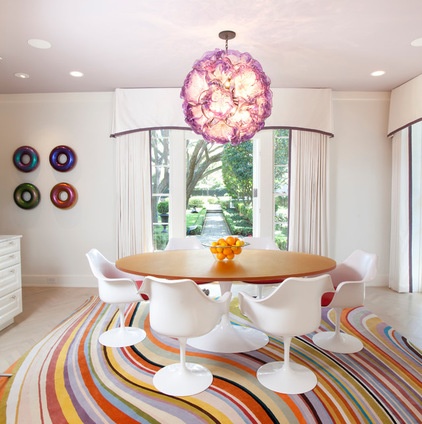
Knoll commissioned the chair design from Saarinen and holds the exclusive design and manufacturing rights. Unceasing in its manufacture and still standing strong today, the Tulip Chair coordinates with Knoll’s Pedestal Collection Saarinen table of the same design.
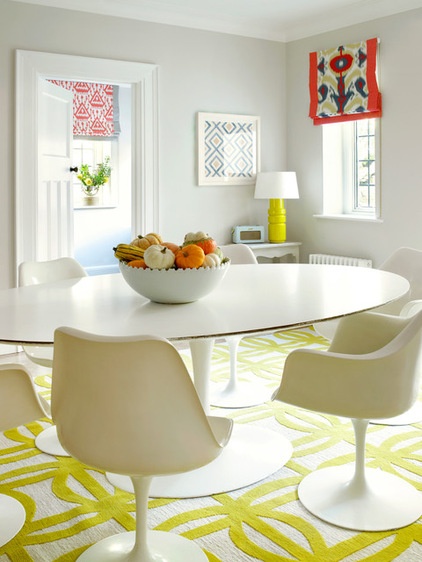
Components
Shell and base. Fiberglass allowed Saarinen to achieve the organic, expressive shape and allowed for flexibility. Too much flexibility, in fact, because Saarinen originally hoped to build the entire chair out of fiberglass, but found the single leg needed more stability. So, while the seat shell was made of fiberglass, the base was made of molded cast aluminum finished in a nylon coating. The chairs are available with either a swivel or stationary base. And today they are made exactly the same as they were when they first went into production in 1958. How’s that for good design?
Arms. Saarinen referred to himself as a “form giver,” and that’s evident in how the armchair’s integrated arms gently unfurl at the edges, rather reminiscent of a flower petal. The armless chair is simpler but still rolled at the perimeter.
Cushion. A removable solid-color vinyl cushion comes standard, but other options, such as Ultrasuede, leather and fabric upholstery are possible.

What’s Not a Tulip Chair
While similar to Saarinen’s chair, the cousin clone shown here has a different base shape. A Dallas company called Burke made these chairs in the early 1960s. While the seat shape and pedestal leg are similar to Saarinen’s design, the Burke design has a four-sided star-shaped base instead of a round base.
Burke’s design was clearly inspired by Saarinen’s chair. Although a lookalike, the Burke version has also become a collectible. In fact, the Burke chair, not the Tulip Chair, was part of the Star Trek television series set.
As they say, imitation is the sincerest form of flattery, and there are many replicas on the market today. As with any replica, the quality is usually compromised and the lines, or form, isn’t the same. “Every ‘reproduction’ of the design sacrifices something — proportions, materials, functionality, quality etc. — in pursuit of the form,” says Knoll’s communications associate, Todd Cooke. Only products stamped “Knoll” are representative of Saarinen’s intended design.
While the price tag for a new, authentic Tulip Chair is hard to swallow for many (discussed later), a much less expensive replica will likely lead to disappointment. If you can’t buy new, holding out for the real deal by looking for authentic vintage pieces is probably your best bet.
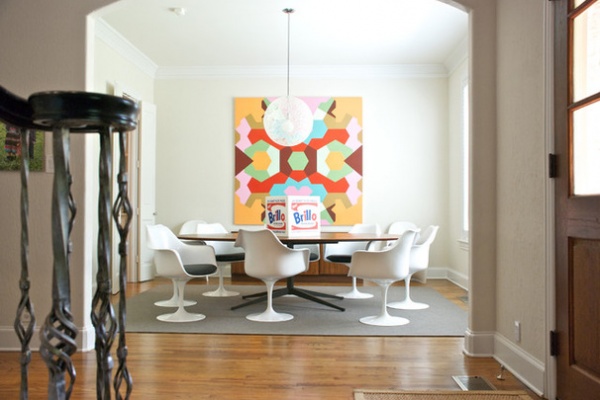
Where to Use the Tulip Chair
Dining areas are likely the most common places to use Tulip Chairs. As Saarinen sought to simplify the mass of unsightly legs, a table setting can show off the clean lines of his design whether there are two chairs or eight, as shown here.
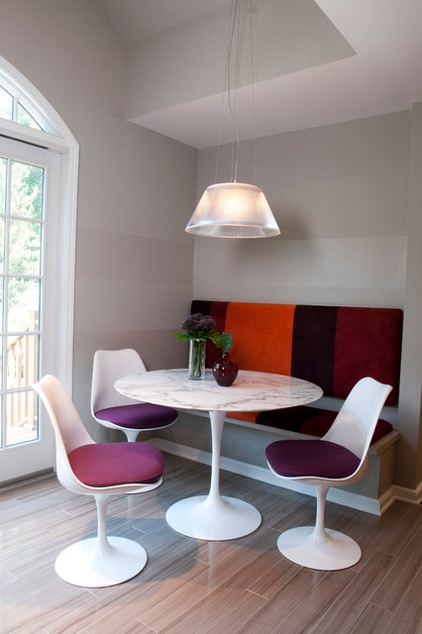
Tulip Chairs work well paired with a built-in banquette, especially if the chair is the swiveling variety, which allows sitters to pass more easily.
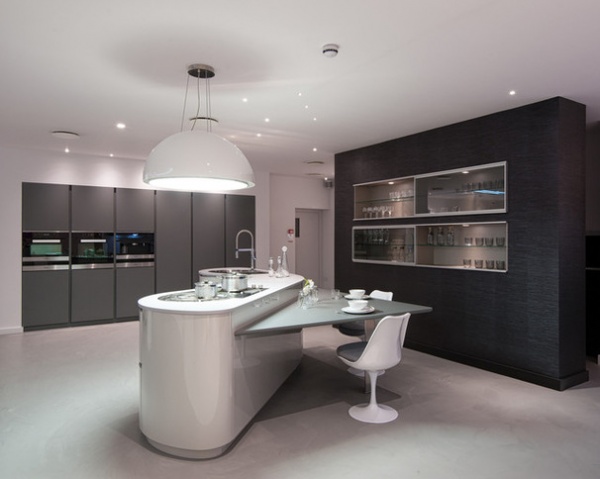
This sleek island eating area wouldn’t look nearly as streamlined with an alternate chair. The chair’s fluid design and curves mimic the organic shape of the island. The smooth, circular base also makes cleaning underfoot easier, compared to a traditional chair.
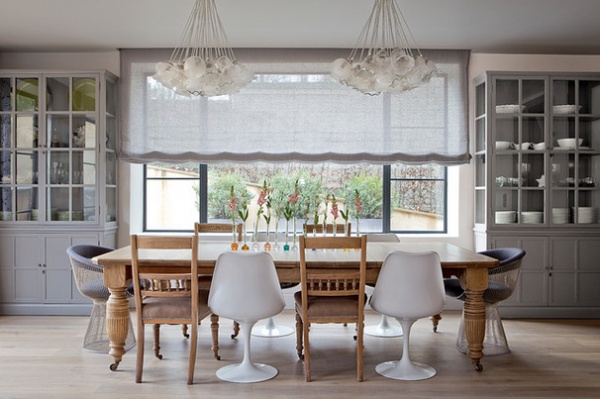
Mixing Styles
While Saarinen’s creation clearly meshes well with midcentury modern and sleek, contemporary spaces, it also works surprisingly well with more traditional antiques.
This dining area, by Godrich Interiors, has Tulip Chairs mixed with a heavy wood table with turned legs and carved and turned dining chairs.
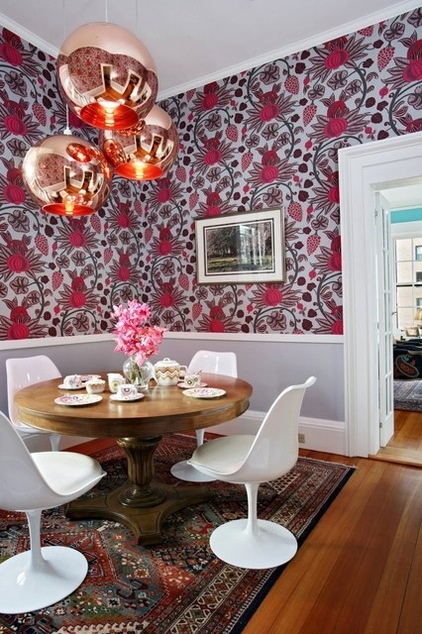
Here four Tulip Chairs are combined with a very traditional wood pedestal table — a pedestal design from one era meets a pedestal design from another. The resulting look is clean and elegant.
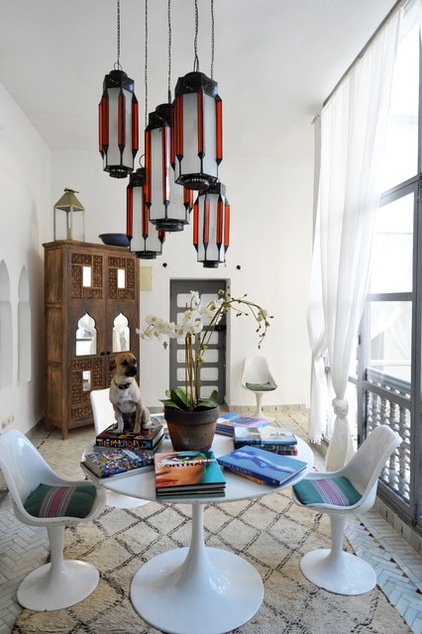
Moroccan decor and Saarinen’s Tulip Chairs might seem an unlikely marriage, but the simplicity of the Tulip design softens the complexity of any surrounding pieces.
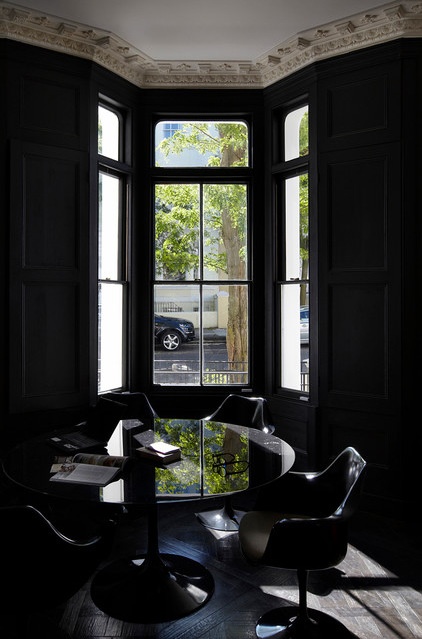
Colors
While white is the most often seen color, the Tulip Chair is also available from Knoll in platinum and black, shown here. In comparison to the more lighthearted white option, black reads as more dramatic.
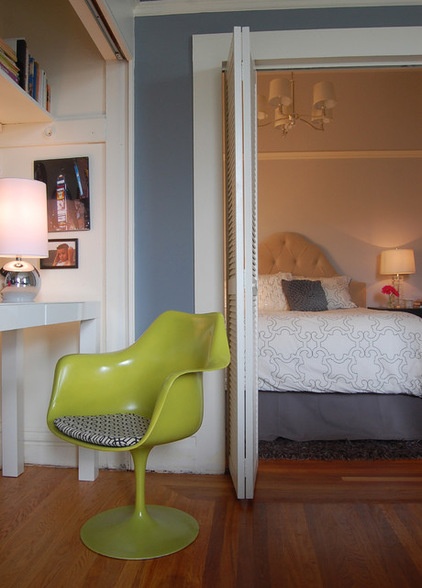
Designer Jennifer Jones of Niche Interiors took a vintage Tulip Chair in rough condition and not only saved it, but added her own stamp. She says her contractor sanded down the chair’s surface and sprayed on several coats of a luscious lime green paint in a high-gloss finish.
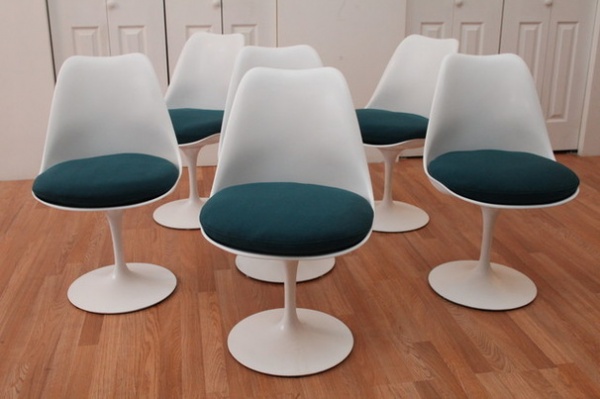
Care
Knoll suggests cleaning the base, shell and leg with Windex, Fantastik or any other ordinary nonabrasive household soap or detergent. Never use steel wool or harsh abrasives; SoftScrub can be used to remove stubborn stains if the above recommendations don’t work.
Note that vintage white Tulip Chairs will likely have yellowed to some degree. The yellowing is typical of older plastics, and unfortunately it’s not removable with cleaning.
Cooke adds that exposure to sunlight and the salt in sea air could expedite yellowing. So, as with most furniture finishes, it’s best to shield them from harmful elements.
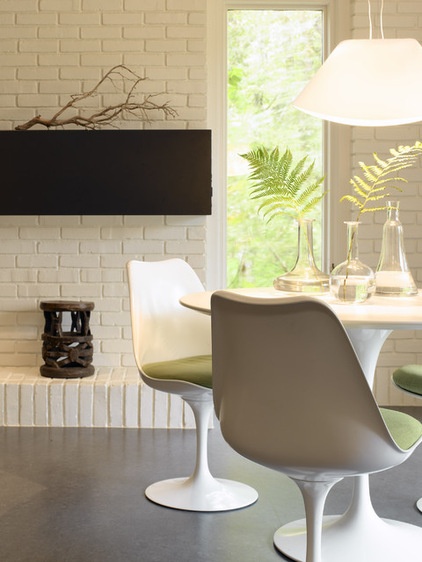
Where to Buy a Tulip Chair
If you are in the market for a Tulip Chair, first decide whether you want a new chair or a vintage chair. New chairs are available from Knoll directly or dealers that sell Knoll furniture, like Design Within Reach. New Tulip armchairs from Knoll start at $1,683, while the armless chairs are $1,396.
Vintage chairs can be purchased on online sites like Houzz, eBay and Craigslist. Some online sites, such as 1stdibs, connect shoppers with dealers all over the world and showcase vintage furnishings for sale. Genuine chairs will have a Knoll label, so be sure to check.
Local antiques stores, especially dealers who specialize in midcentury pieces, are ideal places to start your search.
More:
18 Great Midcentury Modern Chairs
Houzz Quiz: Which Midcentury Modern Chair Are You?












